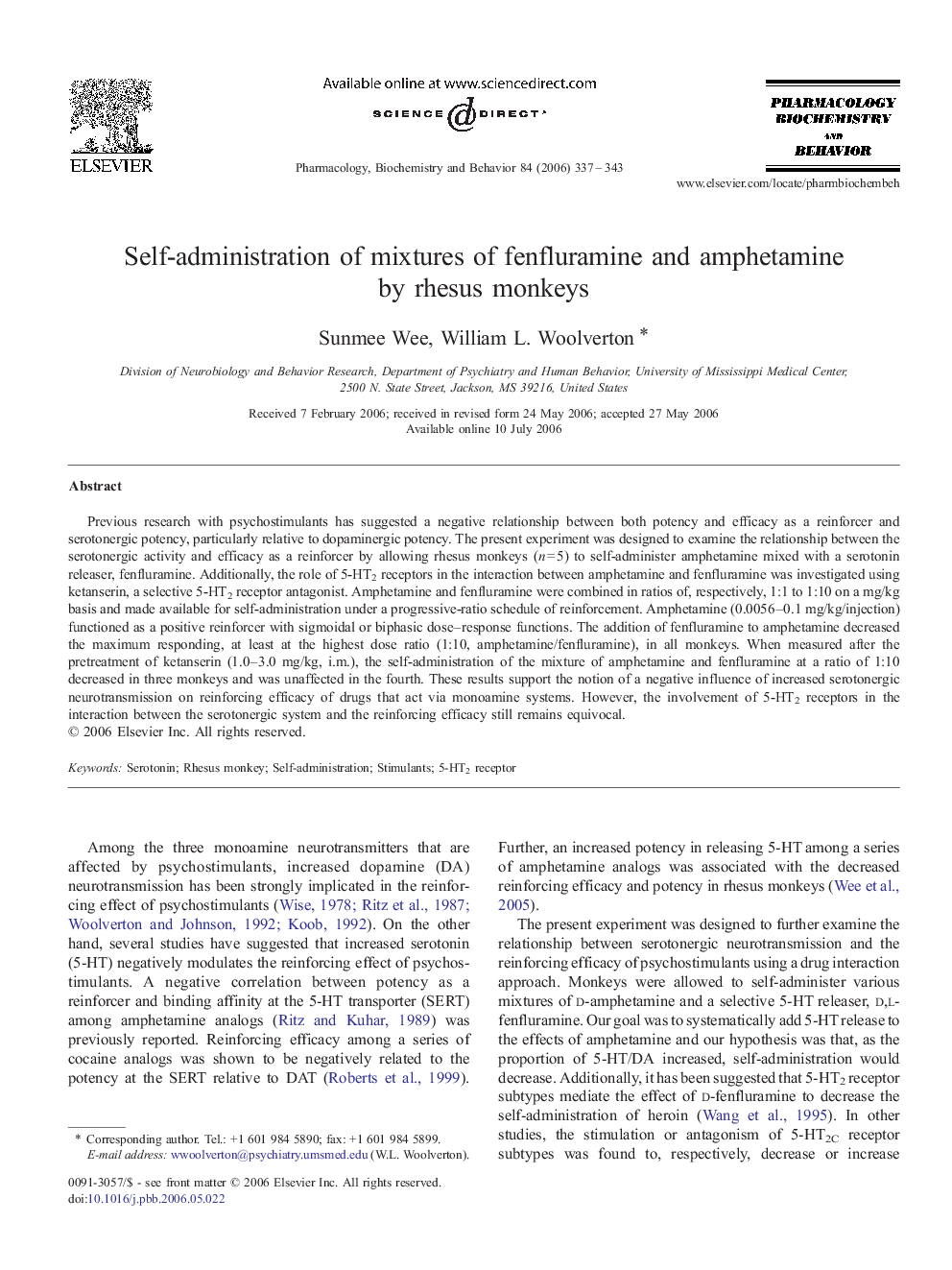| Article ID | Journal | Published Year | Pages | File Type |
|---|---|---|---|---|
| 2014324 | Pharmacology Biochemistry and Behavior | 2006 | 7 Pages |
Abstract
Previous research with psychostimulants has suggested a negative relationship between both potency and efficacy as a reinforcer and serotonergic potency, particularly relative to dopaminergic potency. The present experiment was designed to examine the relationship between the serotonergic activity and efficacy as a reinforcer by allowing rhesus monkeys (n = 5) to self-administer amphetamine mixed with a serotonin releaser, fenfluramine. Additionally, the role of 5-HT2 receptors in the interaction between amphetamine and fenfluramine was investigated using ketanserin, a selective 5-HT2 receptor antagonist. Amphetamine and fenfluramine were combined in ratios of, respectively, 1:1 to 1:10 on a mg/kg basis and made available for self-administration under a progressive-ratio schedule of reinforcement. Amphetamine (0.0056-0.1 mg/kg/injection) functioned as a positive reinforcer with sigmoidal or biphasic dose-response functions. The addition of fenfluramine to amphetamine decreased the maximum responding, at least at the highest dose ratio (1:10, amphetamine/fenfluramine), in all monkeys. When measured after the pretreatment of ketanserin (1.0-3.0 mg/kg, i.m.), the self-administration of the mixture of amphetamine and fenfluramine at a ratio of 1:10 decreased in three monkeys and was unaffected in the fourth. These results support the notion of a negative influence of increased serotonergic neurotransmission on reinforcing efficacy of drugs that act via monoamine systems. However, the involvement of 5-HT2 receptors in the interaction between the serotonergic system and the reinforcing efficacy still remains equivocal.
Related Topics
Life Sciences
Biochemistry, Genetics and Molecular Biology
Biochemistry
Authors
Sunmee Wee, William L. Woolverton,
